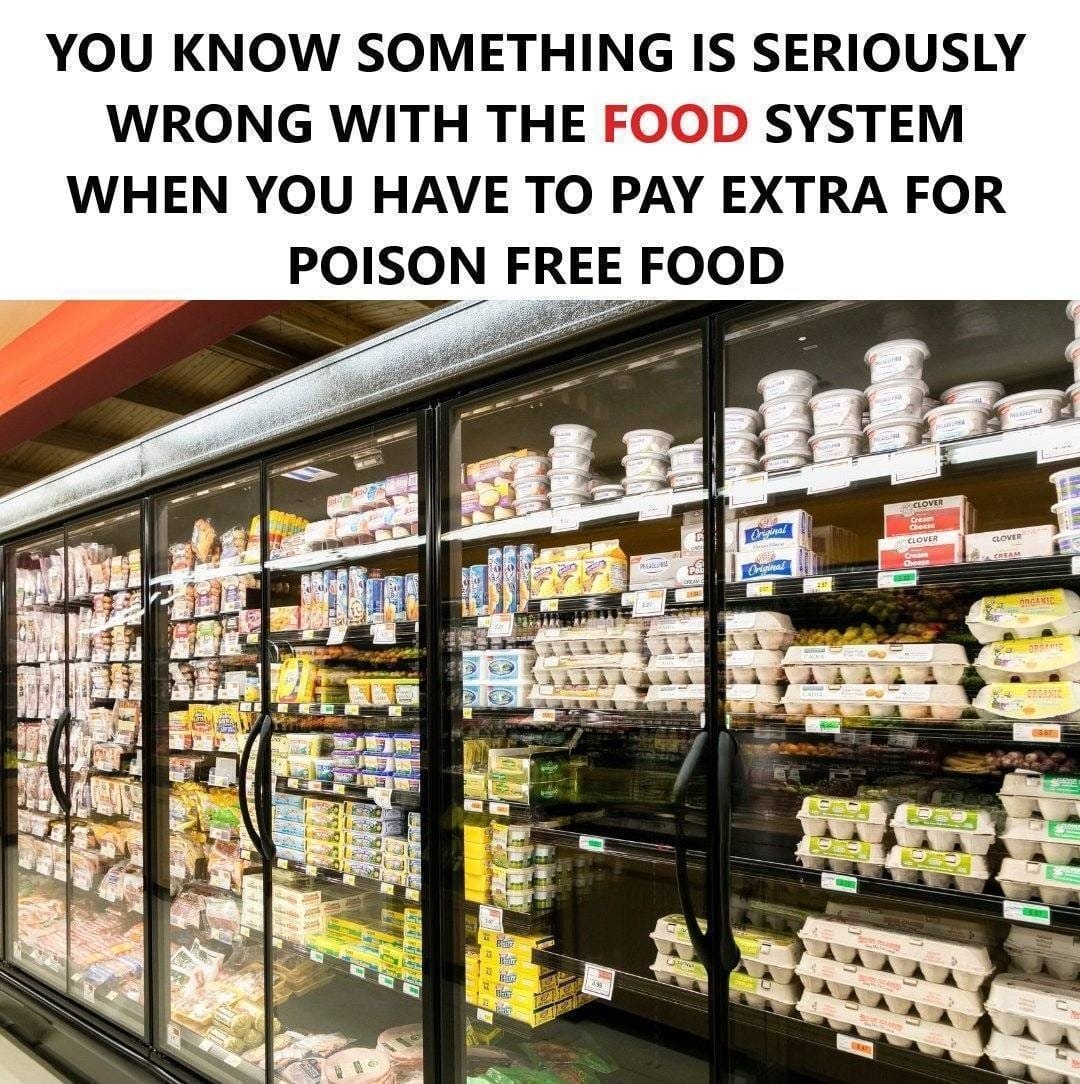ADVERTISEMENT
**You Know Something is Seriously Wrong with the Food System When You Have to Pay Extra for Poison-Free Food**
The food system is one of the most integral aspects of our lives. It impacts our health, our environment, and the sustainability of our planet. Yet, in recent years, there has been a troubling trend: consumers are finding themselves forced to pay extra for what should be a basic expectation—food that is free from harmful chemicals, pesticides, and other toxins. This phenomenon, where healthier and “poison-free” food comes with a premium price tag, signals a deep-seated issue with the food system, one that is rooted in corporate practices, governmental policies, and the very nature of industrial agriculture.
In this article, we will explore why consumers are being asked to pay more for food that should inherently be safe and free from toxins, why the current food system has led to this situation, and what this means for our health, our environment, and the future of food production. We will also discuss potential solutions to this problem, from individual consumer choices to systemic changes that could reshape the food industry and create a healthier, more sustainable food system for all.
### **1. The State of the Modern Food System: Industrial Agriculture and Its Hidden Costs**
In the modern food system, the goal is often to produce the most food in the shortest amount of time, with the least possible cost. This model, largely driven by industrial agriculture, has led to a rise in the use of synthetic fertilizers, pesticides, herbicides, and genetically modified organisms (GMOs), all of which contribute to the chemical contamination of our food.
#### **1.1 The Pesticide Problem**
One of the primary issues with the industrial food system is the widespread use of pesticides. Pesticides are chemicals used to protect crops from pests, but they are not selective in their action. While they may kill insects, weeds, or fungi that could damage crops, they also have the potential to harm other organisms—including humans.
According to the U.S. Environmental Protection Agency (EPA), over 1 billion pounds of pesticides are used in the United States alone each year. The majority of these pesticides are absorbed by the food we eat. In fact, the U.S. Department of Agriculture (USDA) regularly detects pesticide residues on a wide variety of foods, from fruits and vegetables to grains and dairy products.
The problem is compounded by the fact that the safety of many pesticides has been called into question. Studies have linked pesticide exposure to a variety of health problems, including developmental delays in children, cancer, reproductive issues, and neurological disorders. Even low-level exposure to pesticides over time can accumulate in the body and have long-term effects.
#### **1.2 The Role of Genetically Modified Organisms (GMOs)**
Another key issue in the modern food system is the widespread use of genetically modified organisms (GMOs). GMOs are crops that have been altered at the genetic level to possess desirable traits, such as resistance to pests or herbicides, faster growth, or enhanced nutritional content. While GMOs are promoted as a way to increase food production and reduce reliance on pesticides, there are growing concerns about their long-term impact on both human health and the environment.
Many GMO crops are engineered to withstand herbicides like glyphosate, the active ingredient in Roundup. This has led to an increase in the use of herbicides, which has raised concerns about the potential health risks associated with glyphosate exposure. Some studies have suggested a link between glyphosate and cancer, though the evidence remains contentious.
Furthermore, the widespread use of GMOs has raised environmental concerns, including the loss of biodiversity, the contamination of non-GMO crops, and the development of herbicide-resistant weeds. The lack of transparency surrounding GMO crops also makes it difficult for consumers to make informed choices about the food they are consuming.
For Complete Cooking STEPS Please Head On Over To Next Page Or Open button (>) and don’t forget to SHARE with your Facebook friends
